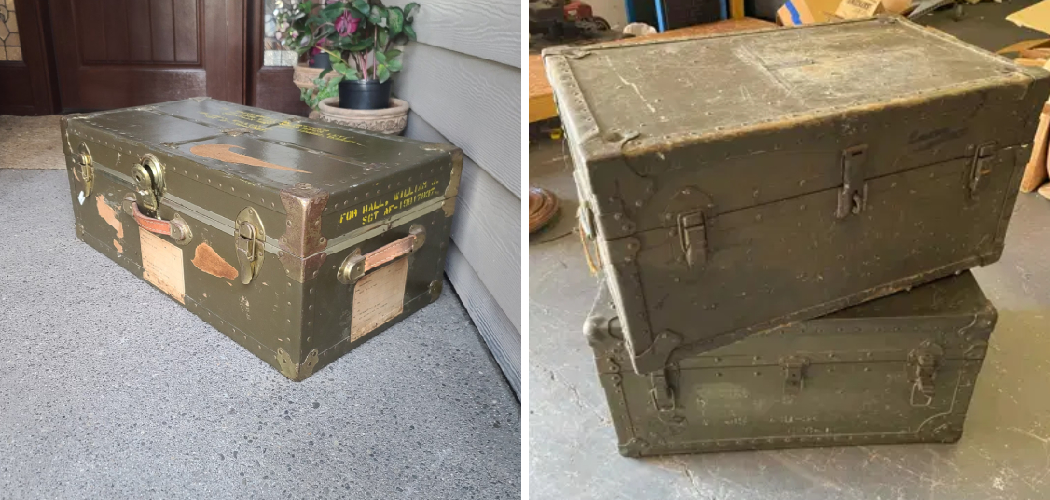Dating military foot lockers is crucial for both historical and collectible value, as it allows enthusiasts and historians to accurately trace the origins and significance of these artifacts. Understanding how to date a military foot locker involves a combination of meticulous examination, historical research, and knowledge of military paraphernalia. This article will walk you through the essential steps and considerations, beginning with identifying military foot lockers’ different types and designs.
We will then delve into the specifics of markings, materials, and manufacturer stamps, followed by methods to authenticate the age and history of a foot locker through military archives and expert consultations. Finally, we will discuss ways to document, preserve, and display your findings, ensuring that the historical integrity of the foot locker is maintained for future generations.
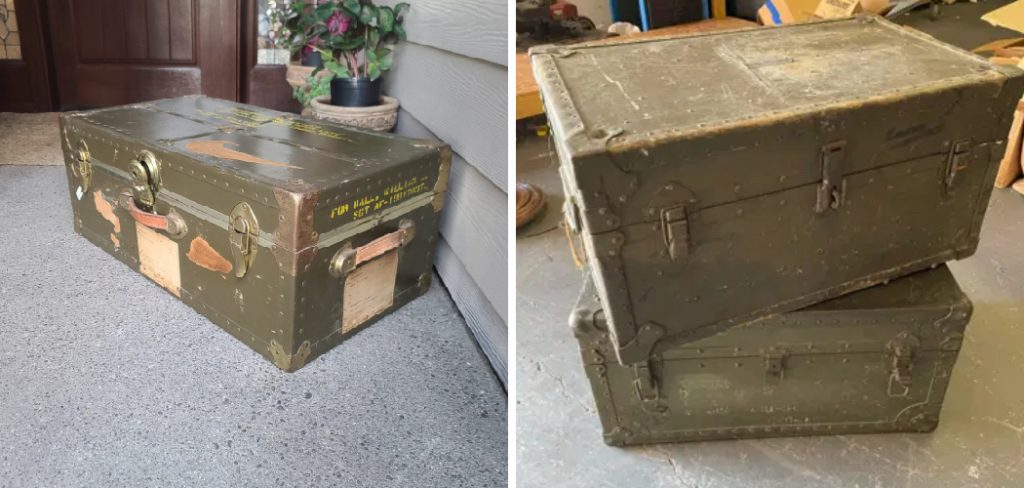
Understanding Military Foot Lockers
Types and Designs
Military foot lockers come in various designs that reflect the needs and resources of different eras and military branches. Early foot lockers were typically constructed from wood, offering sturdy storage and easy repair. As technology advanced, metal foot lockers became prevalent, particularly during the mid-20th century, providing enhanced durability and security. Canvas foot lockers were also introduced, mainly used for their lightweight nature and portability. Each design and material shift reflects an adaptation to the time’s logistical demands and operational requirements, thereby offering clues about the specific period and context in which the foot locker was used.
Identifying Markings and Features
Identifying markings and features on military foot lockers is a vital step in dating them. Common markings include stencils, stamps, or engraved labels with unit numbers, service branches, and sometimes the soldier’s name. Additionally, inspecting components such as handles, hinges, and lock mechanisms can provide insights into the foot locker’s age and origin, as these features often evolved over time. For instance, earlier models might have leather or wrought iron handles, while later versions could incorporate more standardized metal parts. Paying close attention to these details helps construct an accurate historical profile of the foot locker.
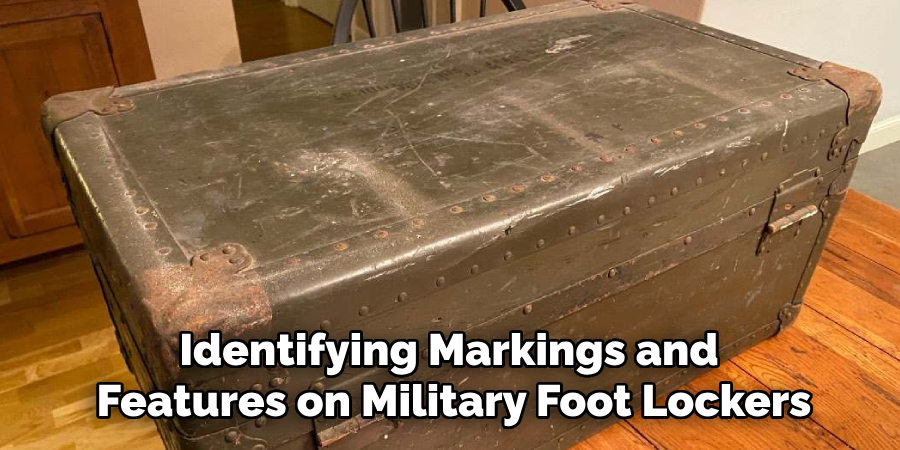
How to Date a Military Foot Locker: Methods for Dating a Military Foot Locker
Researching Historical Context
Accurately dating a military foot locker begins with thorough research into its historical context. The use of historical records and military archives can provide invaluable insights into the periods during which different types of foot lockers were used. By consulting these archives, one can often find detailed descriptions, photographs, and procurement records indicating specific use timeframes. Additionally, military history books and reliable online resources can offer context regarding the operational periods of various designs and materials. Understanding the historical backdrop allows historians and collectors to narrow down the potential age of a foot locker by aligning it with documented uses and events.
Examining Materials and Construction
Military foot lockers’ materials and construction techniques can offer significant clues about their age. Wood was commonly used in early foot lockers due to its availability and workability. Examining the type of wood, its grain, and the methods used to join pieces can help identify the era of construction. Similarly, the shift to metal in mid-20th-century foot lockers can aid in dating them, as can specific metal types and treatment processes. Prized for their lightweight and portable properties, canvas foot lockers also have historical markers in terms of the canvas weave, stitching patterns, and fasteners used. Notating these changes over time can pinpoint when a foot locker was likely manufactured.
Identifying Manufacturer Marks
Manufacturer marks are another critical element in the dating process. Many military foot lockers bear stamps, logos, or serial numbers that point to their origins. These marks can include the manufacturer’s name, location, and sometimes even the year of production. By cross-referencing these marks with historical production records or catalogs, one can ascertain the approximate date of manufacture. Manufacturer records, which are sometimes available in public archives or specialized collections, can reveal production runs and changes over time, adding another layer of accuracy to the dating process.
Reviewing Military Branch or Unit Markings
Specific markings indicating the military branch or unit provide another valuable dating method. Look for unit insignia, stenciled numbers, or property tags that indicate the foot locker’s assignment. These markings often vary between branches (e.g., Army, Navy, Air Force) and units within those branches, and their styles can evolve over time. Understanding these variations can help narrow down the era and the branch that utilized the foot locker. For instance, specific serial numbers or emblem designs might be traceable to certain time periods or types of military activities, thus offering precise dating information.
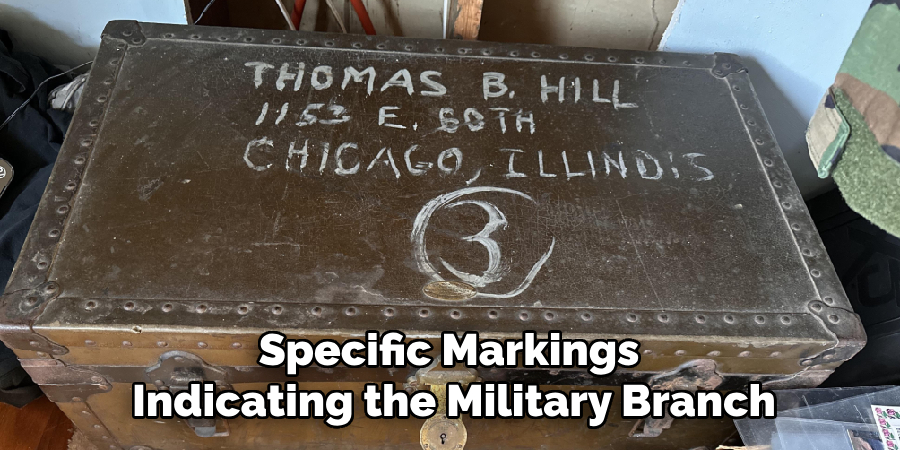
Documenting and Verifying Findings
Photographing and Recording Details
Documenting all markings, features, and dimensions of a military foot locker is essential for accurate verification and future reference. Start by photographing the foot locker from multiple angles, including close-ups of any distinctive markings, labels, or unique features. Make sure to capture details of the handles, hinges, lock mechanisms, and any wear or modifications.
In addition to photographs, take precise measurements of the foot locker’s dimensions and note the materials used in its construction. Keeping a detailed log of these observations will create a comprehensive reference that can be used to verify the foot locker’s historical authenticity and facilitate expert consultations.
Consulting Experts or Collectors
Seeking the advice of military antiques experts or seasoned collectors is invaluable for accurately dating and authenticating a military foot locker. Experts can provide insight into specific features, construction methods, and markings that may not be immediately apparent. Joining online forums or attending military history events can also yield a wealth of information and firsthand accounts from experienced collectors. Engaging with a community of enthusiasts offers unique perspectives and access to specialized knowledge, contributing to a more thorough understanding of the foot locker’s historical significance and authenticity.

Preserving and Displaying a Military Foot Locker
Tips for Cleaning and Preserving Foot Lockers
Maintaining the historical integrity of a military foot locker involves careful cleaning and preservation techniques. Begin by gently dusting the exterior with a soft brush to remove surface dirt. For wood surfaces, a damp cloth with mild soap can help clean without damaging the patina or original finishes. Metal parts should be treated with rust inhibitors while avoiding abrasive methods that could erase historical markings. Conditioning leather handles with a suitable leather conditioner is also advisable to prevent cracking.
Ideas for Displaying Foot Lockers
To display a military foot locker effectively in collections or museums, consider placing it in a climate-controlled environment to avoid deterioration. Position the foot locker on a stable stand or platform to prevent contact with potentially damaging surfaces. Using well-lit, clear exhibit cases or placing them alongside related military artifacts can enhance their story. Descriptive plaques detailing the foot locker’s history and context add educational value to the display.
Importance of Sharing the Foot Locker’s History
Sharing the foot locker’s history is crucial for engaging future generations in appreciating military heritage. Documenting its background, including information about its use and anecdotes from soldiers, enriches its legacy. Creating digital records or multimedia presentations can make this history accessible to a broader audience, ensuring that the significance of the foot locker endures through time.
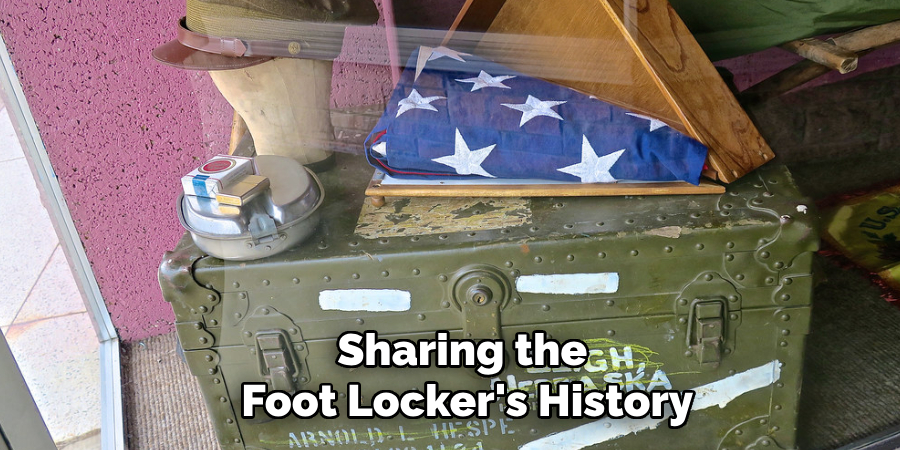
Conclusion
In conclusion, identifying and dating a military foot locker requires a meticulous approach, incorporating various methods such as analyzing construction materials, manufacturer marks, and branch-specific markings. Essential steps include detailed documentation through photographs and measurements, as well as seeking expertise from military antique specialists. Understanding “how to date a military foot locker” provides crucial insights into the object’s historical context and provenance. Preserving these artifacts through proper cleaning, storage, and display techniques ensures the longevity of their historical value.
Embracing these preservation efforts not only honors the legacy of military history but also fosters a deeper appreciation for the stories embedded within these objects. We encourage enthusiasts and collectors alike to continue exploring and learning about military antiques, sustaining the narrative of bravery and sacrifice for future generations.

